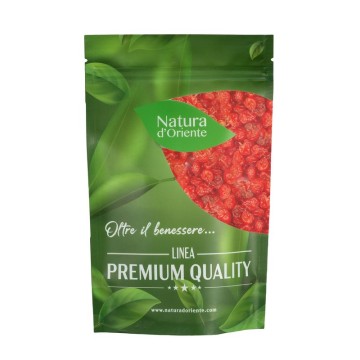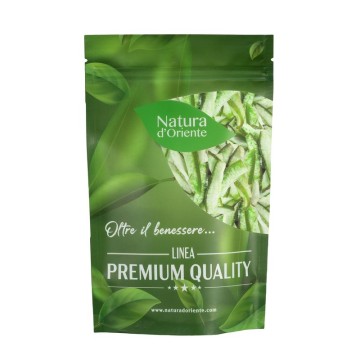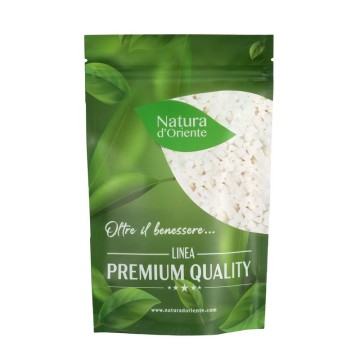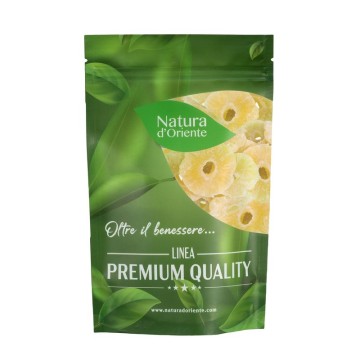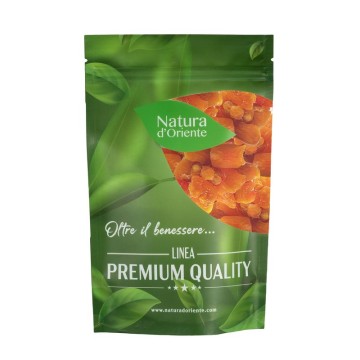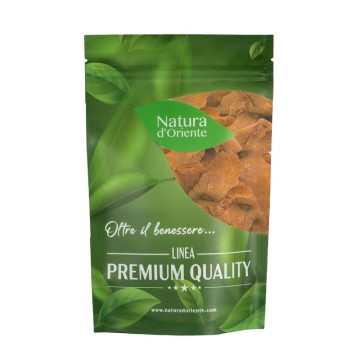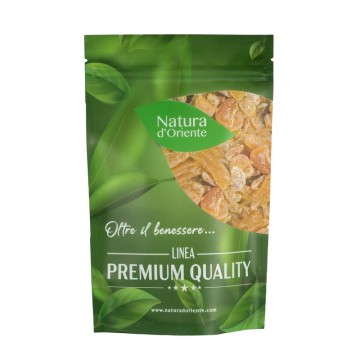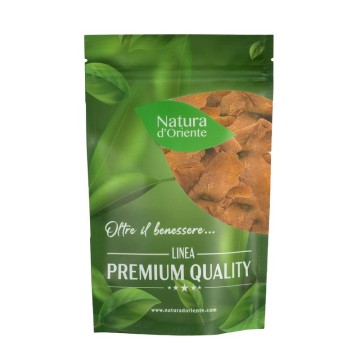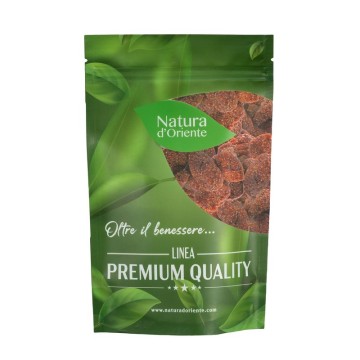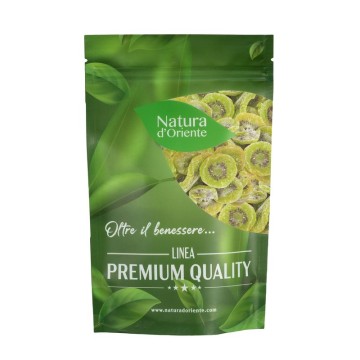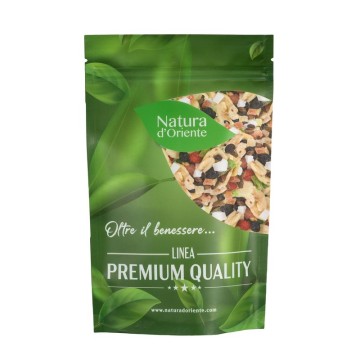Natural dehydrated red pitaya (dragon fruit): properties and benefits
Red pitaya or dragon fruit is a tropical fruit highly appreciated for its antioxidant properties, the content of some mineral salts and that of vitamin C. On the benefits of pitaya, what the sources agree on is that being rich in fiber it is a friend of the intestine. As for the diet, being rather caloric due to the fructose content it is certainly not the right fruit for hypoglycemic diets, however as regards cholesterol and hypertension it has no specific contraindications. The content of vitamin C and other antioxidants (carotenoids and betaine) as we have said makes it considered a fruit with discrete antioxidant properties.
Origins and History of cultivation
The plant grows naturally but is also cultivated and not only for food purposes, it is also considered an ornamental plant, for this purpose it is also cultivated by us, but for fruit purposes it remains strictly a tropical plant. Pitaya is certainly native to Central and South America, there are archaeological findings in sites of pre-Columbian populations dating back to 2000 years ago with pitaya seeds. However, we know that it also spread very early in Asia and from Asia, of course, comes the other name "dragon fruit", currently it is cultivated in every tropical area.
Plant and Fruit
The pitaya is the fruit of a plant called Selenicereus undatus, belonging to the Cactaceae family, and like all members (except one) of this family it is native to the New World. It is an epiphytic plant, meaning that it climbs the stem of other plants (but also on rocks), but generally epiphytes do not do this because they feed on them in some way, they are not parasites, it is their way of reaching the sunlight. The tropical forests are so thick that at the base of the trees the light almost cannot reach, so the plants either grow or climb like epiphytes do. Selenicereus undatus is therefore a cactus that grows in length and reaches a height of ten meters. The plant cannot self-pollinate, its pollination is taken care of by bats and moths. The species belongs to the genus Hylocereus and looking at the etymology (naturally from Greek) of these botanical names we have the summary of everything we have written: hylo comes from the Greek ΰλη (hyle) and means forest, cereus (wax candle) alludes to the columnar development of these plants. Ondatus (wavy) in the name of the species refers to the edge of the leaves. To summarize: we are talking about a forest cactus that grows in height (climbing) and with leaves with wavy edges. The fruit is slightly longer than it is wide, therefore not perfectly globular, the length ranges from 5 to 12 cm, the width from 4 to 9, the external color is pink or red, the pulp inside is white with dark seeds. The flowering (large flowers) are greenish white and occurs at night, so much so that another name for pitaya is queen of the night.
Nutritional values of red pitaya
On the nutritional values of red pitaya, you can find a lot of contradictory information online, we rely on an official source, the United States Department of Agriculture. But first, it is worth remembering that especially with regard to calories, dehydrated products like the one in question naturally have more, the calories in a fruit are essentially given by the sugar content (in general, fats and sugars in foods, but normally in fresh fruit the fat content is zero) but also by how much water it contains, the more water the fruit contains, the fewer calories there will be. Pitaya, although a fresh fruit, does not have a very high water content and therefore even fresh pitaya has a non-low calorie content for a fresh fruit, 264 kcal per 100g. For the dehydrated one we go around 350. In terms of vitamins, the only one it is rich in is vitamin C (less than citrus fruits anyway). As for mineral salts, the sodium content is important (but this is not necessarily a good thing since our diet is too rich in it) and calcium, but in truth there are no studies on the real bioavailability of the calcium contained in pitaya.
Use of red pitaya in the diet
The pitaya should be peeled and the white pulp inside is consumed, you can also cut it in half and scoop it out with a teaspoon. In Italy it is not very widespread, the flavor is a bit like that of pears anda bit like that of a very ripe kiwi, but the consistency is similar to that of pineapple. You can also find recipes online that use pitaya as an ingredient, it will not surprise anyone that they are essentially all sweet since it is a fruit that as we have said has a significant sugar content, especially fructose. But in reality it could also be combined with savory in traditions, such as those of tropical salads, which usually mix sweet and savory. There is a very refreshing smoothie (but today it's cool to say smoothie), very popular in Mexico called agua de pitaya, you blend together the pulp of the fruit, the lemon (the acidic taste counterbalances the sweetness of the pitaya) and the sugar, it is served cold or you add ice.
Contraindications to the consumption of red pitaya
Essentially the only known contraindication is related to the caloric content, it is not the right fruit for a low-calorie and hypoglycemic diet, it is true that it also gives a certain sense of satiety, but there are other fruits that do the same with a lower caloric intake. In other words, if you have diabetes problems choose another fruit.






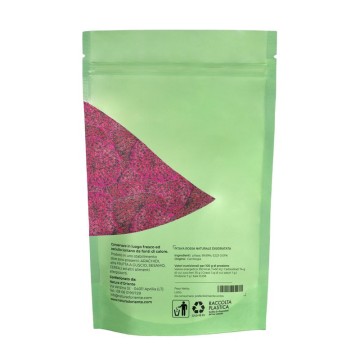


 No reward points for this product.
No reward points for this product.


